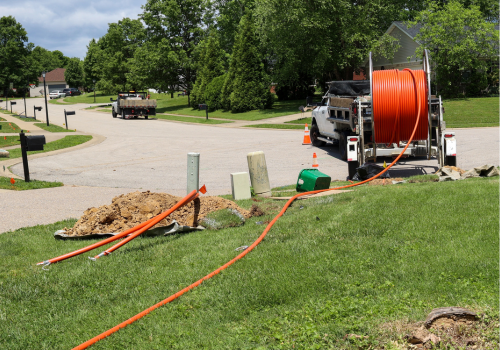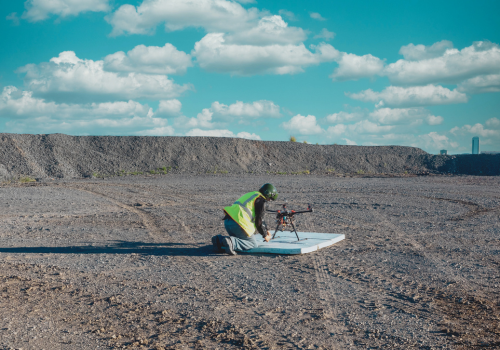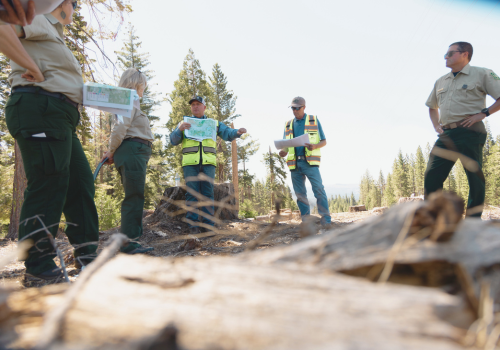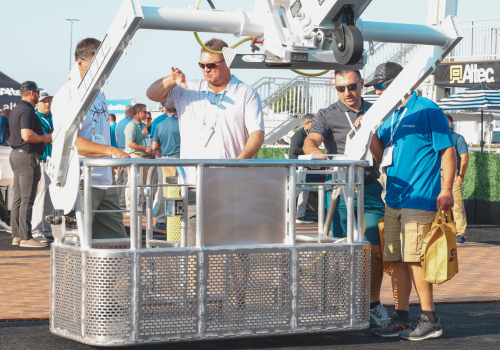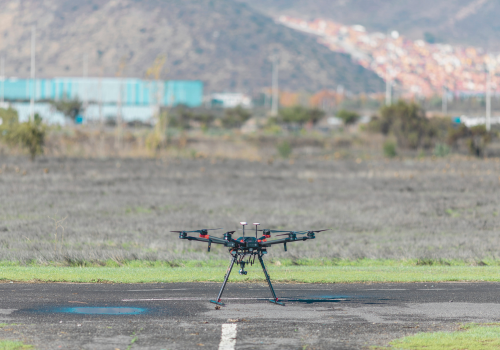Drones are transforming how electric utilities inspect powerlines, offering safer, faster, and more cost-effective solutions than traditional methods. But with so many drone types, sensors, and features on the market, how do you choose the right one? This guide explores key considerations for drone-based powerline inspection and how to select the best drone for your needs.
Electric utilities are finding that drones, also known as unmanned aerial vehicles (UAV) and unmanned aircraft systems (UAS), can be valuable tools in their maintenance operations.
Why Use Drones for Powerline Inspection?
There are several safety benefits to using drones:
- Human personnel maintain a safe distance from electrical hazards
- Storm damage can be surveyed from the air
- Eliminates the need to climb poles
- Reduces reliance on bucket trucks and helicopters
And the economic benefits are just as compelling:
- More productive than manual pole inspections
- Less expensive and more versatile than helicopters
- Better at gathering detailed data
“A good drone with the right sensors can detect certain things even better than the human eye,” said Wyatt Robbins, UAS Sales Director at Frontier Precision Unmanned. “Images and data don’t lie, but human memory might. Also, stored images and data allow utilities to look back in time, eliminating the need to return to the same site over and over. That helps save time and money.”
Types of Drones Used in Utility Inspections
When you begin to consider using a drone for powerline inspection, it’s important to understand the types of drones best suited to different inspection scenarios.
Quadcopters: Versatile and FAA-Friendly
These mid-size drones (under 55 lbs.) are the most common and can carry multiple cameras, such as RGB and thermal, to inspect high-voltage structures (60 kV and above).
Small Drones: Ideal for Substations and Tight Areas
Lightweight drones (under 5 lbs.) can efficiently inspect distribution poles and half-acre substations. They hover close to structures without causing electrical interference.
Fixed-Wing Drones: Long-Range and Efficient
Fixed-wing drones are gaining popularity due to their ability to carry lighter LiDAR systems. They can cover at least three times the area of a quadcopter per flight.
“The price point is similar, but efficiency goes up dramatically,” Robbins noted. “A fixed-wing drone can cover at least three times the area per flight. That’s because it doesn’t need to draw on the battery to operate propellers, which means the same size battery can last a lot longer.”
Hybrid Drones: Heavy Payloads, Longer Flights
Hybrid drones use gas power in addition to batteries, enabling longer flight times for large-area inspections (1,000+ acres per day).
“If a utility is flying shorter missions every day, maybe up to 100 acres, they will probably be fine with a completely battery-operated drone,” said My-Linh Truong, Division Manager for Unmanned Laser Scanning at Riegl USA. “On the other hand, we have some clients who want to fly at least a couple thousand acres per day. They need a hybrid platform to get the necessary one- to two-hour flight times needed to be productive.”
Choosing the Right Sensors: Photogrammetry, LiDAR, and Thermal Imaging
Start With the Data You Need
Drone selection should begin with understanding the type of data your utility needs—images, 3D models, or temperature readings. That will determine your required sensors and, in turn, the size and power of the drone.
Photogrammetry
High-resolution cameras (40 MP minimum) are essential. The Sony ILX-LR1 (61 MP) is a popular choice. GPS integration adds location data, though not as precise as LiDAR. Zoom capability is also important for inspecting small components like cotter pins.
LiDAR (Light Detection and Ranging)
LiDAR uses laser pulses to generate highly accurate 3D models—ideal for measuring powerline sag, tower stress points, and vegetation encroachment. Advances in LiDAR and drone battery tech now allow for compact, lightweight setups that don’t compromise flight time.
Thermal Imaging
When paired with LiDAR, thermal sensors detect heat signatures from transformers or insulators, offering insights for proactive maintenance.
“When you couple LiDAR with a thermal camera, you’re also able to capture the heat signature off of things like powerlines,” Truong said. Robbins agreed, adding that thermal cameras help identify high-risk infrastructure before failures occur.
Drone Selection Criteria: What to Consider
Here’s what to look for when talking to dealers or comparing platforms:
- Built for High-EMI Environments: Drones operating near high-voltage lines should resist electromagnetic interference.
- Stability: A stable gimbal is crucial for capturing clear images of small components. Avoid drones that drift or shake.
- Security: NDAA-compliance is key for flights near sensitive infrastructure. U.S.-made options are available as regulatory scrutiny increases.
- Docking Capabilities: For repeat inspections in fixed locations (like substations), docking systems offer remote launch/recharge options.
- Useful Accessories:
- Lighting systems and spotlights
- Safety gear (landing pads, etc.)
- Flight maintenance tracking software (required by law)
- Image management, mapping, and data processing software
“Never buy something just based on reviews or what a salesperson tells you,” said Mathew Spurlock, Account Manager at Gresco UAS. “Getting some hands-on time with some aircraft is the most important thing.”
Final Thoughts: Match the Tool to the Task
Drone technology has quickly become a critical asset for electric utilities aiming to improve the safety, efficiency, and accuracy of powerline inspections. But choosing the right system starts with a clear understanding of your mission goals.
Start by identifying the data you need—whether it’s high-res imagery, thermal diagnostics, or 3D LiDAR modeling. From there, choose the sensors, drone size, power source, and flight time that best support those needs. Keep regulatory compliance, environmental interference, and operational features like docking in mind as well.
When you match the right drone to the right job, you don’t just improve inspections—you future-proof them.
See Drone Tech in Action at The Utility Expo 2025
Frontier Precision Unmanned, Gresco UAS, RIEGL USA, and other top innovators in drone technology will be exhibiting at The Utility Expo, taking place October 7-9, 2025 in Louisville, Kentucky. Attendees will have the opportunity to explore cutting-edge UAVs, compare features up close, and get expert insights on drone-based inspection strategies in live demos and education sessions. Don’t miss your chance to connect with leading providers and see how drone technology is shaping the future of utility operations.
See the full list of companies that will be exhibiting at The Utility Expo 2025, check out our full Exhibitor Directory.
Subscribe to The Utility Expo monthly newsletter to receive more industry insights like this.
Read Next
10 Best U.S. States and Cities for Powerline Worker Jobs in 2025


